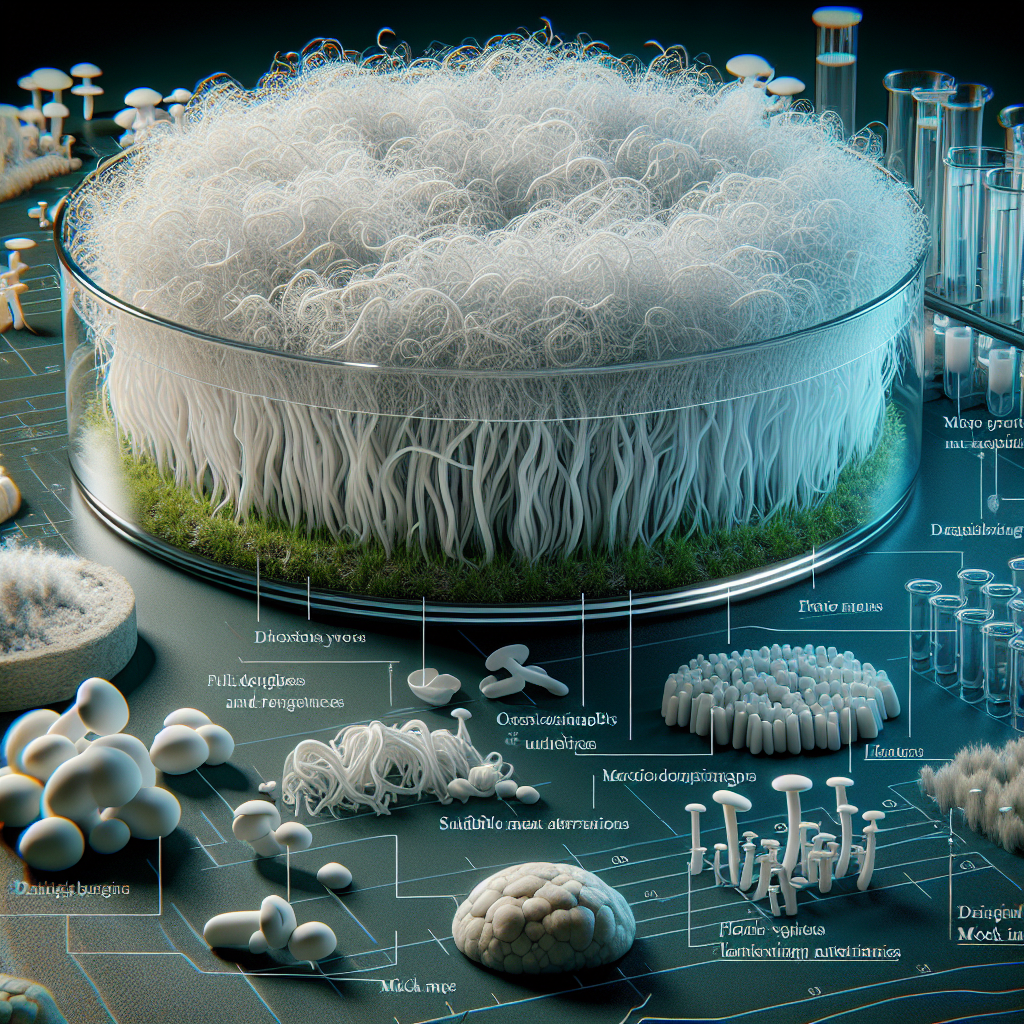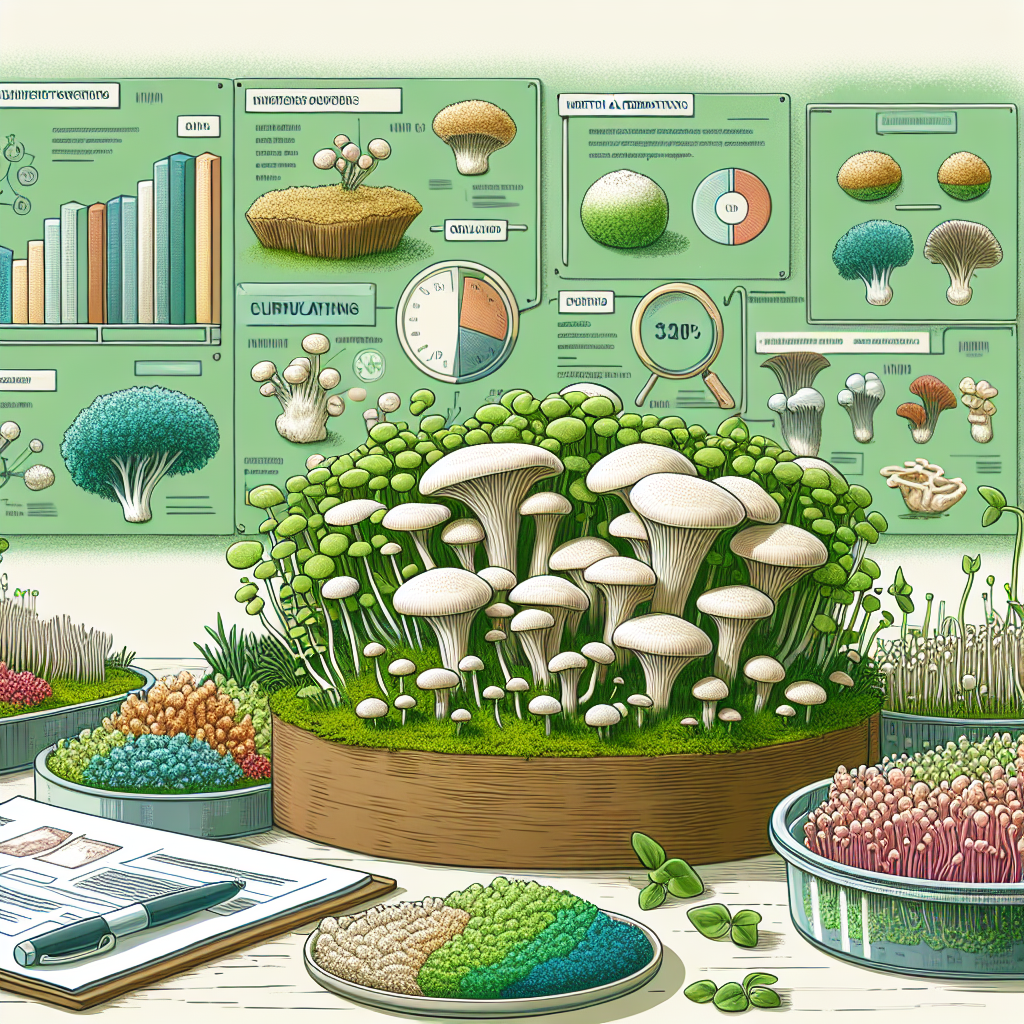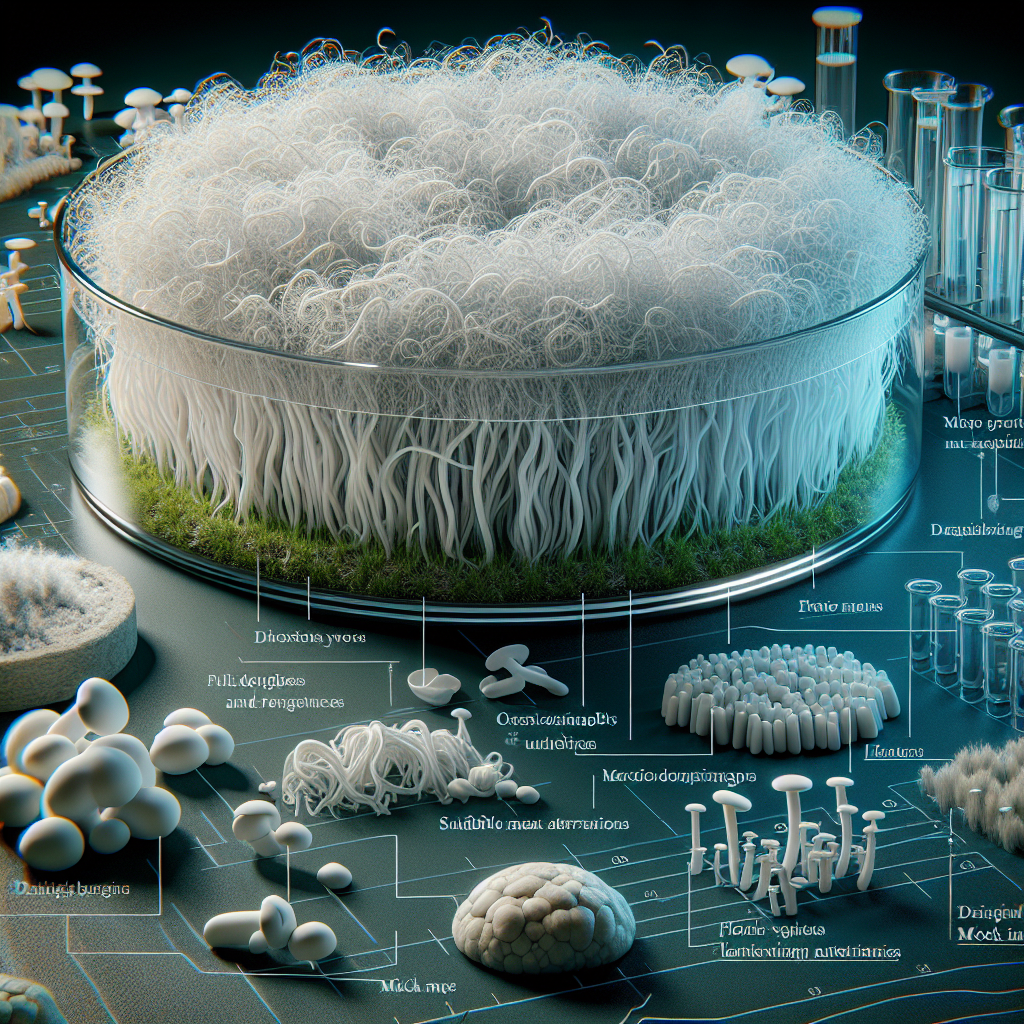Navigating the sphere of edible mycelium introduces you to a fascinatingly diverse world. Understandably, you may be intrigued by the concept, given that mycelium is not commonly seen on dinner tables. This intriguing aspect of the fungal kingdom is not merely a food source, but it promotes health and wellness alongside environmental sustainability. As you journey through this article, expect to gain comprehensive insights into edible mycelium, its nutritious advantages, culinary applications, and more. By the end, you should be sufficiently informed to make a decision on incorporating this alternative food source into your diet.

Understanding the Basics of Mycelium
Within the domain of fungal biology, mycelium is a fundamental component. It refers to a network of interwoven microscopic fungal thread-like structures known as hyphae.
Definition of Mycelium
In simplistic terms, you can liken mycelium to the root structure of mushrooms. Despite being less visible than the fruiting body (mushroom), it is a crucial part of the organism that primarily aids in nutrient absorption.
Characteristic Features of Mycelium
The primary feature of mycelium is its white, web-like appearance. While it is mostly underground, it can sometimes be found just beneath the surface of soil, fallen leaves, or rotting wood. Its highly branched structure extensively permeates the substrate, aiding in nutrient uptake.
How Does Mycelium Grow?
Mycelium grows by elongation and division of hyphae. These filamentous structures seek nutrients and water available in the environment and further proliferate by branching and forming extensive networks. It’s a continuous process, ever-growing until nutrient sources are depleted.
Different Types of Edible Mycelium
While mycelium is associated with a multitude of fungal species, not all are edible or safe for consumption. However, some types of mycelium are not only edible but also incorporated into culinary preparations due to their unique flavours.
Edible Mycelium from Mushrooms
The mycelium of many common edible mushrooms like shiitake, oyster, button, and Portobello are consumed regularly. While they are not typically harvested separately from the fruiting body, they contribute significantly to the nutritional content and flavour profile of these mushrooms.
Edible Mycelium from Truffles
Truffles, another form of edible fungi, harbour an extensive network of mycelium. This mycelium extends much beyond the truffle itself, intertwining with the roots of host trees, contributing to the truffle’s rich and unique flavour.
Other Types of Edible Mycelium
Some less well-known edible mycelium varieties are derived from fungi like morels, milkcaps, and certain types of puffballs. Their culinary use, however, is less common and often culturally specific.
Nutritional Value of Edible Mycelium
Mycelium not only imparts unique tastes and textures to food but also enhances the meal’s nutritional content.
Nutritional Composition
Rich in protein, fibre, vitamins such as B-complex and D, and essential minerals like selenium, mycelium offers considerable nutritional value. Its protein content is particularly noteworthy for vegetarians and vegans, serving as a potent plant protein source.
Unique Nutrients in Mycelium
One of the unique nutrients found in mycelium is beta-glucan, a type of soluble dietary fibre known for its potent immune-boosting properties. Additionally, mycelium also contains compounds called terpenes, which have antioxidant and anti-inflammatory properties.
Health Benefits of Mycelium
A diet that includes mycelium can potentially lower cholesterol, promote gut health, boost immunity, and provide anti-inflammatory benefits. Its high fibre content also helps in maintaining overall digestive health.

Culinary Uses of Edible Mycelium
Versatile and unique, edible mycelium is a valuable ingredient in a variety of culinary traditions worldwide.
Popular Dishes Using Mycelium
From being the star ingredient in soups, stews, and stir-fries to gourmet truffle-infused dishes, mycelium features prominently in diverse culinary preparations.
Cooking Techniques for Mycelium
Mycelium can be sautéed, grilled, roasted, stir-fried, or even consumed raw in salads depending on the specific type and personal preference. It absorbs flavours well, making it a great addition to dishes involving strong seasonings or sauces.
Pairings and Flavor Profiles
The earthy, umami-rich flavour of mycelium lends itself well to both hearty and delicate dishes. It pairs particularly well with dairy, garlic, onions, and green herbs like parsley or thyme, but also complements sweetness of peas, corn, and beets.
Safety Concerns and Precautions
While mycelium is generally safe to consume, it’s essential to be aware of potential safety concerns and precautions.
Common Misconceptions About Mycelium Consumption
Contrary to some misconceptions, mycelium is not the same as mold, although both are fungal components. Thus, sound judgement is required to identify edible mycelium versus harmful mold infestations.
Potential Allergens and Reactions
Like any food, mycelium can potentially cause allergic reactions in susceptible individuals. These reactions can vary from mild discomfort to severe anaphylaxis.
Precautions When Sourcing and Preparing Mycelium
Sourcing mycelium from wild sources can be risky if you are not adept at identifying edible types. It is recommended to source mycelium or associated edible fungi from reputable retailers and to cook it thoroughly to kill any potential pathogens.
Environmental Impact of Mycelium Cultivation
Mycelium cultivation has an overall positive environmental impact, significantly contributing to sustainable agriculture.
Sustainability of Mycelium Cultivation
Mycelium cultivation is relatively low-impact and sustainable, requiring less water and resources compared to traditional crops. Notably, mycelium can break down organic matter, including some types of waste, converting them into nutrient-rich soil.
Impacts on Local Ecosystems
Mycelium plays a vital role in local ecosystems, aiding in nutrient recycling and promoting soil health. It can also serve as bio-control agents against certain plant pathogens, making it especially crucial for organic farming.
Role in Waste Management and Soil Health
Mycelium’s ability to decompose organic matter and convert it into fertile soil inputs significantly into waste management strategies while improving soil health, contributing to sustainable agriculture.
Techniques for Cultivating Edible Mycelium at Home
Cultivating mycelium at home can be a rewarding pursuit both as a hobby and as a way to grow nutritious food in a small space.
Basic Requirements for Mycelium Cultivation
To cultivate mycelium, you need a sterile substrate, usually a mixture of organic matter, a suitable temperature range, and humidity levels. Depending on the fungal species, light may or may not be necessary.
Step-by-Step Guide to Cultivating Mycelium
Cultivation starts by inoculating the substrate with fungal mycelium (‘spawn’). It’s essential to maintain the right conditions and monitor for contamination during the colonization process. Once mycelium has fully colonized the substrate, the appropriate changes to the environment can trigger the formation of fruiting bodies.
Troubleshooting Common Cultivation Issues
Common issues in mycelium cultivation include contamination by other microbes, inadequate or excessive moisture, and incorrect temperature. Each of these problems can be managed by careful monitoring and adjusting cultivation conditions as necessary.
Innovative Uses of Mycelium in the Food Industry
With increasing interest in plant-based foods and sustainability, mycelium is making its way into innovative food products.
Mycelium as a Meat Substitute
With its fibrous, meat-like texture, mycelium from certain fungi is being used as a meat substitute, offering a high-protein, environmentally friendly alternative that mimics the texture of meat.
Novel Mycelium-Based Food Products
From mycelium-based cheeses to snacks, the food industry is experimenting with novel applications for this versatile ingredient.
Potential for Future Food Innovation
With continued research and development, the potential for further innovation using mycelium is immense, signalling an exciting future for this sustainable food source.
Mycelium and Medicine
Mycelium is becoming increasingly recognized for its potential medicinal properties, both in traditional medicine and in modern therapeutics.
Mycelium’s Role in Traditional Medicine
In traditional medicine, particularly in Eastern countries, certain types of mycelium have been used for centuries to boost immunity, improve digestion, and enhance longevity.
Modern Research on Mycelium and Health
Modern research confirms the immune-boosting properties of mycelium and explores potential benefits ranging from anti-cancer effects to the management of diabetes and high cholesterol.
Potential Medicinal Uses of Mycelium
The potential medicinal uses of mycelium are vast and include immunity enhancement, cancer prevention, and treatments for conditions like high cholesterol and diabetes. Additionally, it could also contribute to mental health through its potential role in neurogenesis (the process of generating new neurons).
The Economic Value of Mycelium
With increasing recognition of its nutritional, environmental, and medicinal benefits, mycelium is becoming an economic powerhouse in its own right.
The Market for Mycelium-Based Food Products
There is an increasing demand for mycelium-based food products, particularly in the plant-based food market segment. In 2020, the global mushroom market was valued at over $50 billion, indicating a robust demand for fungal products, including mycelium.
Job Creation and Economic Growth Through Mycelium Farming
Cultivating mycelium requires skilled labor, presenting opportunities for job creation and economic growth, particularly in rural areas and developing countries.
Investments and Funding in the Mycelium Sector
With its sustainable and eco-friendly cultivation process, coupled with its nutritional and medicinal benefits, the mycelium sector is seeing a significant increase in investments and funding, making it a promising sector for the future.
